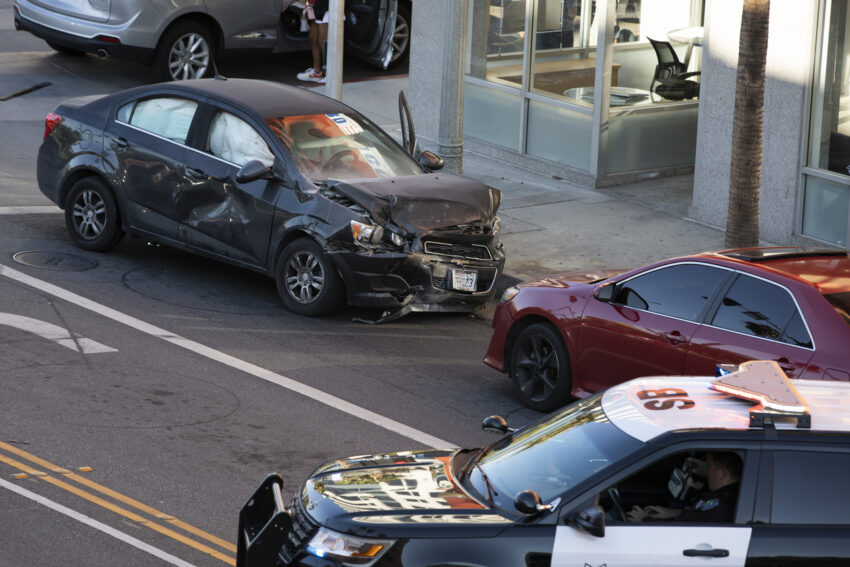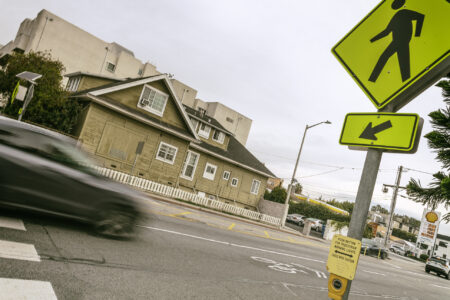
Share On Social!
In December 2023, the National Traffic Safety Administration (NHTSA) released the sixth edition of the Model Minimum Uniform Crash Criteria (MMUCC).
The MMUCC is a voluntary guideline of standardized data for state and local agencies to collect on motor vehicle crashes. This can help compare crash trends across and between states and guide the design and assessment safety countermeasures and their effectiveness.
Earlier in 2023, NHTSA had sought public comment on their revisions to the fifth edition of the MMUCC.
Roughly 500 comments were submitted, most by Salud America! members.
Unfortunately, it is unclear how NHTSA considered the solicited comments.
Because the MMUCC is a voluntary guideline rather than a rule, NHTSA is not required to publish a summary of comments received and how they addressed them.
We at Salud America! have submitted a Freedom of Information Act (FOIA) request to examine how NHTSA summarized and addressed the public comments they received. Check back for future updates.
In the meantime, let’s explore how NHTSA missed opportunities to improve crash data collection and enhance safety in five key areas of concern identified in our model comments and those of other transportation and safety advocates.
Missed Opportunity No. 1: 85th Percentile Speed
In public comments, our Salud America! members and others urged NHTSA to include the 85th percentile speed along with the posted or statutory speed limit in the MMUCC.
The 85th percentile speed is the speed at which 85% of people are driving under free-flowing conditions and is the speed at which the posted speed limit is determined after a speed study.
The 85th percentile speed is often higher than the posted speed.
Because this variable reflects the speed at which people are driving rather than the speed at which people should be driving, it would provide more valuable information to understand risk factors in traffic crashes, thus help develop and evaluate the effectiveness of safety countermeasures.
However, in the new MMUCC, NHTSA did not include the 85th percentile speed.
The MMUCC recommends collecting data on the posted speed limit and on verbal or physical evidence of speeding. However, it does not explicitly recommend collecting data on the mean or 85% percentile speed or the driver’s actual speed.
Missed Opportunity No. 2: Vehicle Height/Weight
In public comments, our Salud America! members and others urged NHTSA to include vehicle height and weight in the MMUCC because the growing size of vehicles threatens other safety countermeasures, thus we need better data collection.
“Large vehicles are 2 to 3 times more likely to kill a pedestrian than smaller models due to their weight, height, and aggressive front-end vehicle design – all of these factors inflict more damage on the internal organs, heads, and necks of walkers than lighter lower-profiles cars which are more likely to strike a pedestrian’s lower extremities,” according to a fact sheet from Families for Safe Streets calling for more rigorous 5-Star Safety Ratings Program known as the New Car Assessment Program (NCAP).
However, NHTS did not include vehicle height and weight in the new MMUCC.
The MMUCC recommends collecting data on gross vehicle rating above 10,000 pounds – but not below – despite that most crashes are with passenger vehicles (usually below 10,000 pounds).
“Federal safety regulators have known for years that SUVs, with their higher front-end profile, are at least twice as likely as cars to kill the walkers, joggers and children they hit, yet have done little to reduce deaths or publicize the danger,” according to an investigative report by the Detroit Free Press and USA Today Network.
One improvement in the new MMUCC is the addition of examples of obstructing angles on the vehicle, including, “when the size or shape of a driver’s own vehicle created a visual obstruction (including trailer, vehicle height, blind spot).”
However, this leaves it up to the discretion of the law enforcement office to determine when the height of a vehicle creates a visual obstruction, which defeats the purpose of standardized guidelines.
It is particularly problematic that the MMUCC missed both of these first two opportunities because the most important factor in whether a crash is fatal is the transfer of kinetic energy, and kinetic energy is a function of motion (speed) and mass (weight).
Given two of the same crash scenarios (e.g., same light conditions, roadway conditions, and vehicle safety rating), kinetic energy is the difference between a crash and a fatal crash.
In other words, given two of the same crash scenarios, vehicle speed and vehicle weight are the difference between a crash and a fatal crash.
Without information about kinetic energy, the US will continue to fall short on safety countermeasures and continue to be an outlier among peer-countries for traffic fatalities.
Missed Opportunity No. 3: Person Height/Weight
In public comments, our Salud America! members and others urged NHTSA to include the height and weight of people involved in a crash because a person’s height and weight are also risk factors in whether a crash results in a fatality or serious injury.
NHTSA did not include person height and weight in the new MMUCC.
In the section on traffic records data integration, the new MMUCC suggests that the driver’s height and weight can be obtained by integrating crash data with the American Association of Motor Vehicle Administrators D20 driver data elements.
However, even if states do this data integration, they will only obtain information for the driver and not for non-drivers and non-motorists, such as passengers and people walking and biking.
Missed Opportunity No. 4: Roadway Elements
In public comments, our Salud America! members urged NHTSA to not remove the chapter for roadway data elements because these data are important to evaluate infrastructure and the effectiveness of countermeasures that prevent or reduce the frequency and severity of crashes.
NHTSA did not include a roadway elements chapter in the new MMUCC.
The new MMUCC states, “in the interests of greater data uniformity and integration, the MMUCC 6th edition removed data elements that were previously meant to be derived from other data systems and instead recommends linkages to existing data elements from other national data standards” and mentions the Model Inventory of Roadway Elements (MIRE).
The new MMUCC also states, “NHTSA encourages States to integrate their traffic records data systems to reduce the burden and redundancy of several data collection efforts,” and provides a bulleted list of fundamental MIRE data elements, including roadway functional class, annual average daily traffic, presence/type of bicycle facility, and intersection/junction traffic control.
However, given that NHTSA claims that environment-related reasons only account for about 2% of crashes, it seems unlikely that all states are collecting the necessary roadway data to help identify traffic safety problems and that states will link their crash data with said roadway data.
Missed Opportunity No. 5: Language Around Jaywalking
Transportation safety experts urged NHTSA to remove “Improper Crossing of Roadway of Intersection (Jaywalking)” as a data attribute because it asks law enforcement officers to make a judgement call about the person being hit and does not provide more specific information about roadway conditions than other existing attributes.
They explain that we need officers to report the circumstances of crossing the road, such as the distance between legal crossing, rather than report a victim-blaming judgment.
NHTSA did not remove jaywalking from the new MMMUCC.
Addressing Transportation (and More) in Your Area
The NHTSA missed opportunities as it updated the MMUCC.
Public comments on key improvements – 85th percentile speed, vehicle height and weight, person height/weight, roadway elements, and removal of jaywalking – were not accommodated.
We will share the results of our FOIA request to examine how the NHTSA weighed public comment.
In the meantime, you can spread the word about the distinction between risk factors for crashes and risk factors for fatal crashes, with kinetic energy being the primary risk factor for fatal crashes, and urge state and local agencies to consider speed and weight even though these indicators are not included in the MMUCC.
For all motor vehicle crashes involving death, personal injury, or property damage, we need data on speed and weight.
Also in the meantime, you can help shape healthier environments in your city.
Download a Health Equity Report Card from Salud America! at UT Health San Antonio.
The report card provides maps, data, and gauges to compare public health issues, including transportation, to the rest of your state and nation.
You can email your report card to local leaders to stimulate community change.
You can also use the data in your materials or share on social media to raise awareness about local barriers to health equity, where everyone has a fair, just opportunity to be their healthiest.
GET YOUR HEALTH EQUITY REPORT CARD!
Explore More:
Transportation & MobilityBy The Numbers
27
percent
of Latinos rely on public transit (compared to 14% of whites).



